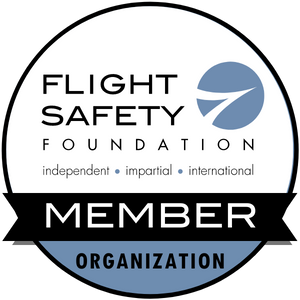How to Create an FAA-Compliant Safety Management System
Implementing an SMS is mandatory in Europe, and coming soon to the United States, both for airports and operators. We spoke with Jim Gautrey, a long-time aviation operator and subject matter expert in SMS, with experience across the aerospace ecosystem, from business jet operators, airports and airlines, and as a key consultant. He is a nominated safety person with several organizations, and a key member of the Centrik team.
Safety is paramount in any successful aviation organization, and an effective SMS (Safety Management System) plays a pivotal role in ensuring the highest levels of safety and operational excellence. For those seeking compliance with the Federal Aviation Administration's (FAA) FAR Part 5 regulations, developing an effective SMS is both challenging and rewarding. This article presents a comprehensive roadmap to guide aviation organizations in their journey towards implementing an SMS that meets the requirements of FAR Part 5.
Step 1: Assess Needs and Understand the Regulation
The first step in embarking on the SMS compliance journey is to educate high-level managers about the significance of SMS and its potential benefits. Training sessions should emphasize the importance of a proactive safety culture and explain how SMS enhances overall organizational efficiency. Furthermore, it is essential to provide a thorough overview of FAR Part 5 regulations to ensure a comprehensive understanding of the compliance requirements.
Conducting a gap analysis between the current safety practices and the FAA's regulatory framework will help identify areas that need improvement. This assessment allows aviation organizations to pinpoint their existing strengths and growth areas, providing a solid foundation for proceeding with the implementation process.
Step 2: Inspiring Hearts and Minds
To ensure the successful integration of SMS throughout the organization, buy-in from all managers and employees is crucial. Develop a clear and robust safety policy that reflects the organization's commitment to safety and the adoption of a just culture. This policy should foster an environment where employees feel comfortable reporting safety concerns without fear of retribution.
Comprehensive training for all staff members is essential to ensure that everyone understands their roles within the SMS and appreciates the value it adds to their work. Continuous messaging and regular communication about SMS benefits will help reinforce the safety-centric mindset.
Step 3: Implementing the SMS
Defining and documenting the SMS processes is pivotal in meeting FAR Part 5 compliance requirements. This step involves establishing a framework for safety reporting, risk management, and safety assurance. Adequate resource allocation must be made to support the implementation of these processes effectively.
To ensure a systematic rollout of the SMS, prioritize its implementation based on immediate needs and long-term goals for your organization. Gradual implementation allows aviation organizations to make necessary adjustments and refine processes as needed, all while maintaining compliance with regulations.
Step 4: Select an SMS Software Solution
Let’s dispense with one concept, at the outset: Excel and Google Sheets are not a long-term solution. Proper compliance requires the right SMS software solution. Indeed, it is a critical decision that will significantly impact the effectiveness of the SMS. Before selecting a specific software, it is vital to gain a clear understanding of the organization's requirements and SMS objectives. Explore various SMS software options and conduct thorough evaluations to assess their compatibility with the organization's needs.
Collaborating with SMS experts who understand the unique challenges facing aviation organizations can provide valuable insights. Trial runs and observation of the software in action can build confidence before committing to full implementation. Ensuring the chosen SMS software aligns with FAR Part 5 requirements and that it meets the expectations of FAA auditors is essential for a successful compliance journey.
Step 5: Gradual Implementation and Continuous Improvement
Aviation organizations should adopt a phased approach to implementing the SMS, starting with essential components and expanding gradually. This approach allows for measured progress, adjustments, and the opportunity to learn from early stages.
Continuous improvement is at the heart of a robust SMS. Encouraging feedback from employees and stakeholders enables organizations to identify areas for enhancement and fine-tune the SMS over time. Conducting regular internal audits helps maintain compliance and ensures that the SMS remains aligned with FAA regulations.
Compliance with the FAA's FAR Part 5 regulations is not a one-time task but an ongoing commitment to safety. Navigating the path to FAR Part 5 compliant SMS requires dedication, collaboration, and a proactive approach to safety management. By assessing needs, educating personnel, defining processes, selecting the right software, and fostering a culture of continuous improvement, aviation organizations can build an effective SMS that enhances safety and operational excellence throughout their operations. Embracing the SMS journey empowers aviation organizations to rise above compliance, ensuring safer skies for everyone involved in aviation.
Let's get started
Talk to our sales team to find out how you can transform your operation with our products and services.

